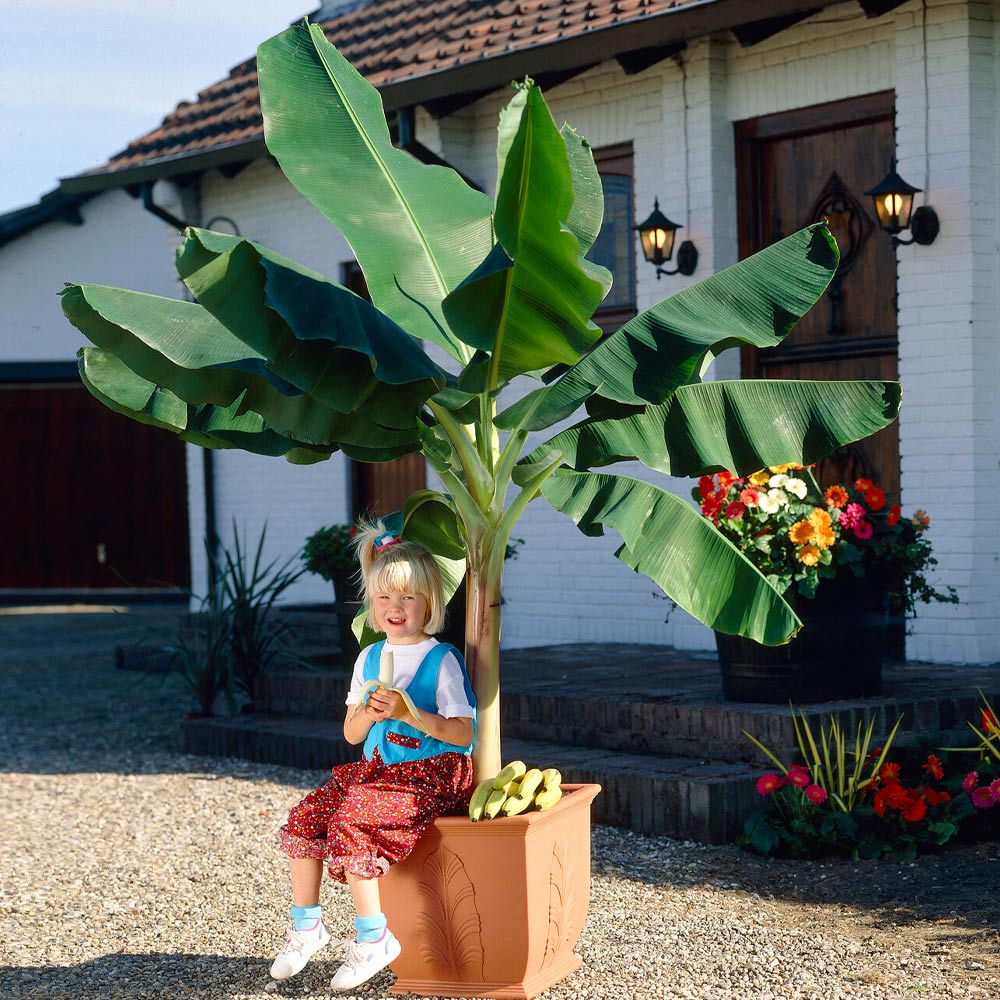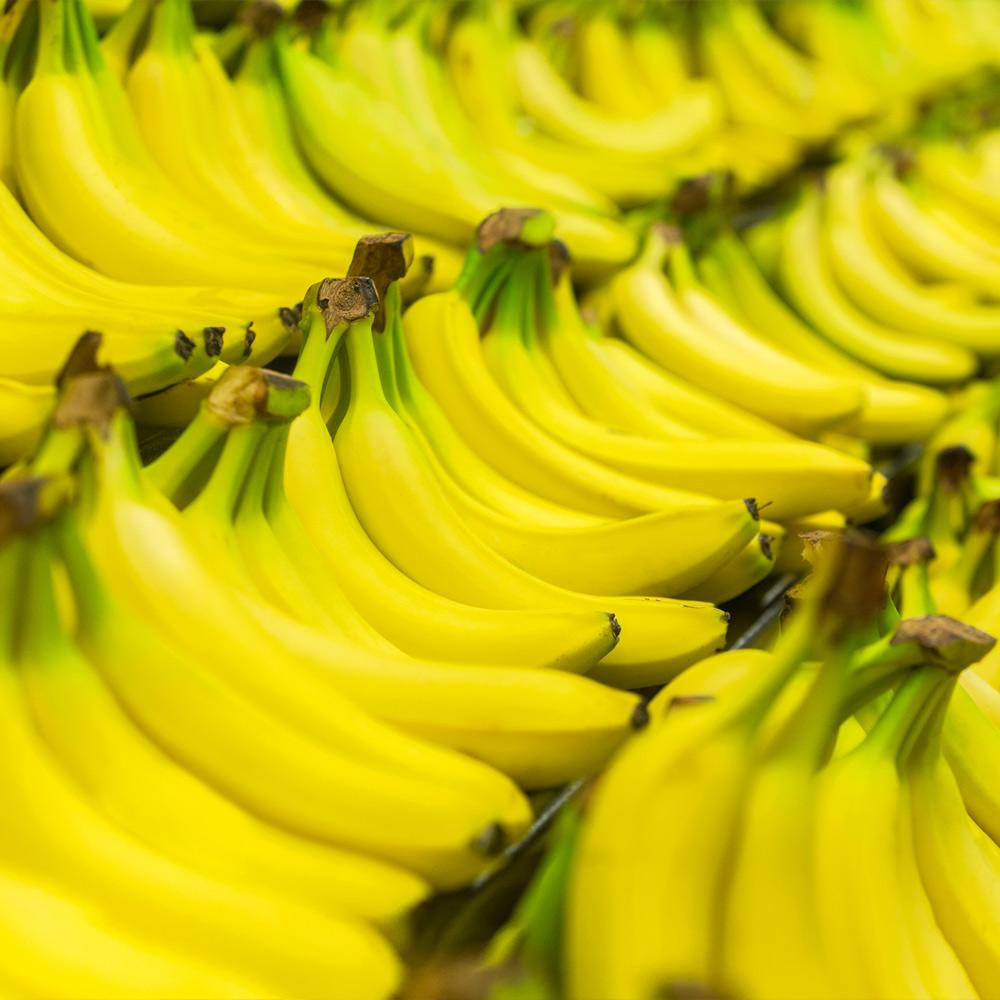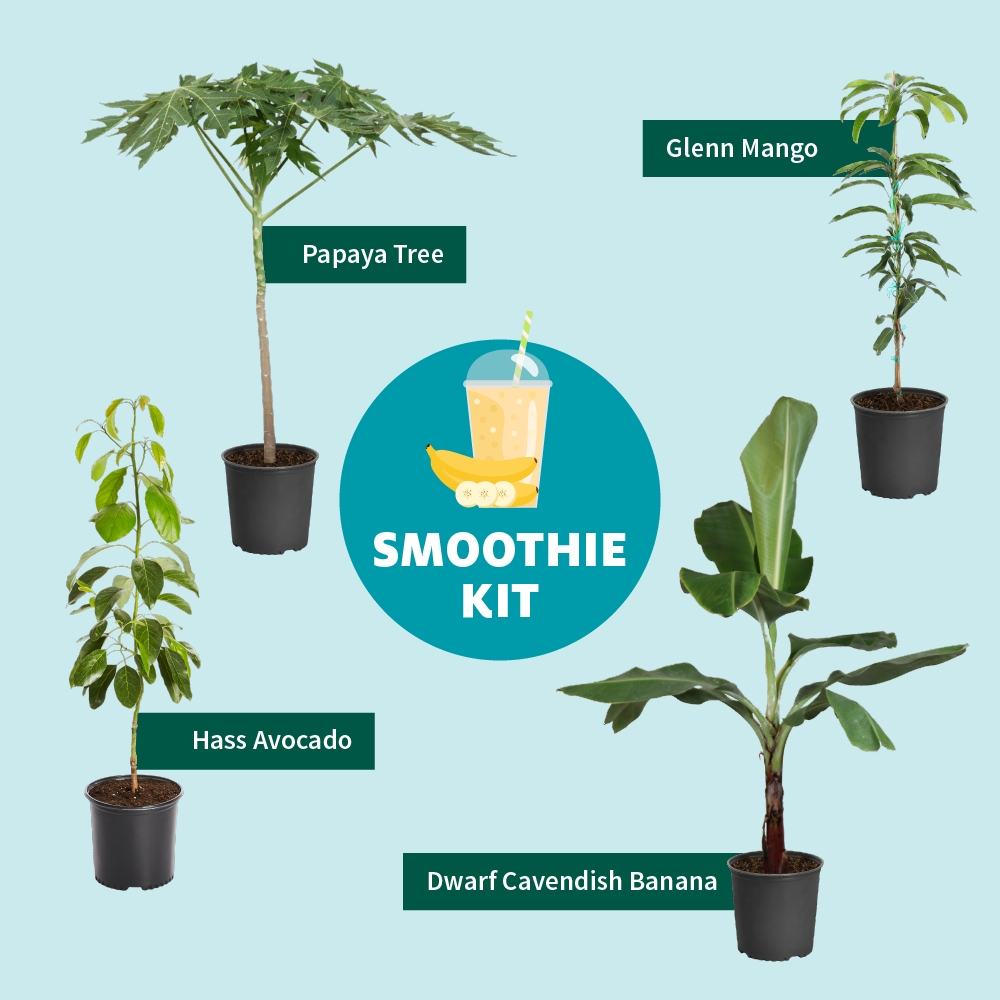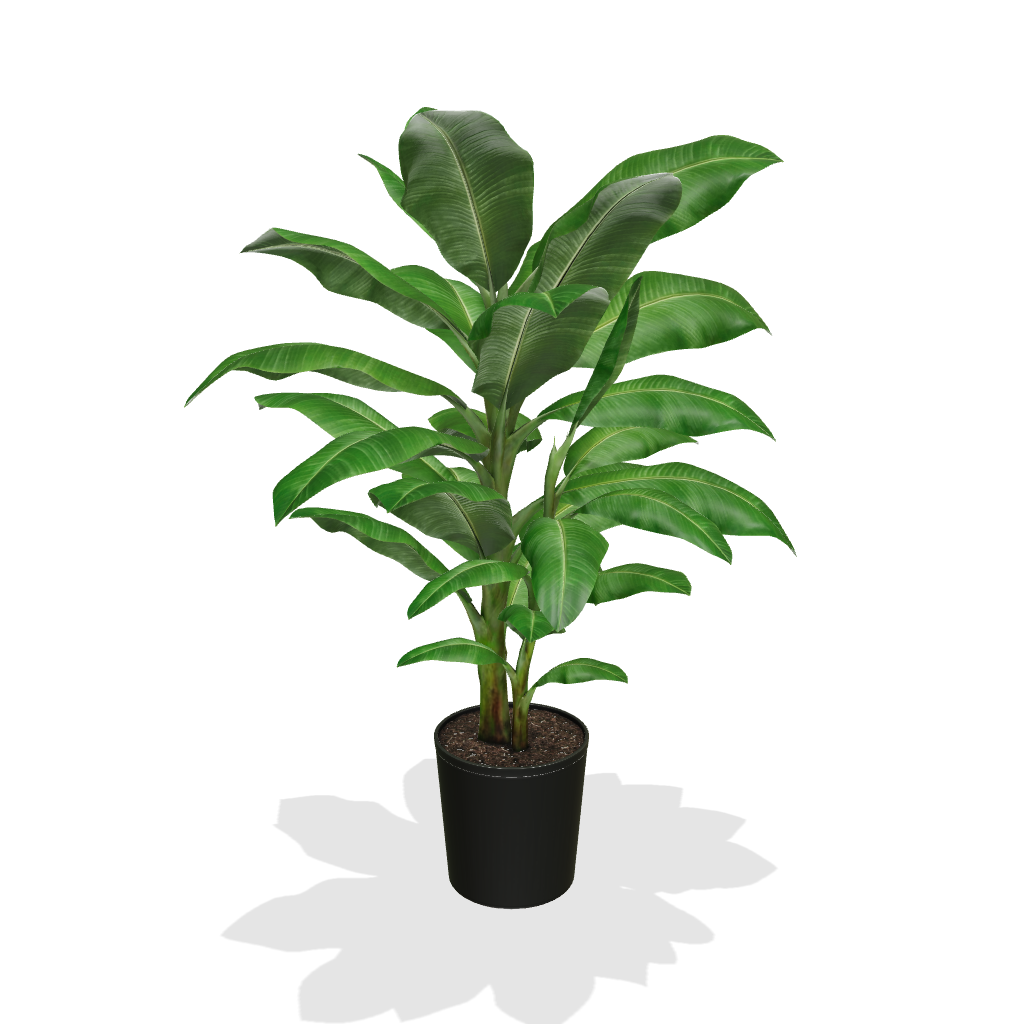Grow Delicious Bananas Indoors or Out!
Why Dwarf Cavendish Banana Trees?
Superfruit, right from home. That's what you'll get with the Dwarf Cavendish Banana Tree. Bananas are ultra-healthful, packed with fiber, potassium calcium and iron, plus the good looks for a tropical-inspired tree.
Even better? Dwarf Cavendish Bananas easily thrive in growing zones 4 through 11. Warmer climates enable vigorous growth when this tree planted in the ground, but because our Cavendish is uniquely dwarf-sized, it also thrives when it's container planted. Plus, it only matures to 8 to 10 feet in height, so you'll be able to transport it from the patio to your kitchen or sunroom with ease.
The Dwarf Cavendish means you'll have a tropical air in any space. The leaves of the Cavendish grow up to 4 feet long, are extremely lush, and provide shade and privacy. Young leaves may tinge with red while the majority of the leaves are a fresh green color for extra visual interest, complemented by sizable flowers that drop prior to the development of your delectable bananas.
Why Fast-Growing-Trees.com is Better
Best of all, your Dwarf Cavendish will be delivered with care. We use special attention when packing and shipping your prized tree, and during the growing season, you'll see fresh new leaves appear every few days. Plus, because we've planted and grown each Dwarf Cavendish for success, you get a proven performer in your homescape. You get healthful roots and developed branching because we've put in the hard work at our nursery, months ahead of time.
Our Dwarf Cavendish is a best-seller with bushels of delicious treats you'll harvest right from home - order your very own today!
Planting & Care
1. Planting: Place your Cavendish Banana in a sunny location with Southern or Western exposure so that it can receive as much afternoon sunlight as possible. If growing indoors, place next to a large, bright window with the same exposure, turning the plant when necessary to avoid plant growth that tilts toward the light source. Outdoor planting should be done in the summer months to avoid the possibility of frost damage.
Once you're ready to plant, dig the hole large enough to accommodate your Cavendish's root system, place your plant, gently backfill the soil and tamp down to avoid air pockets.
If you're planting in a container, select a pot that's twice the size of your shipped container, and make sure it has drainage holes. Use organic soil mix and place your tree in the pot, then move in front of a sunny window.
Note: This product grows best in well-draining soil. When you receive your plant, you may notice small, white beads or rocks in the soil - this medium is added to increase drainage and keep your plant happy and healthy!
2. Watering: Water two or three times weekly, or more often in dry conditions. If you're not sure when to water, simply check the surrounding soil about 2 or 3 inches down...if the soil is dry, it's time to water.
3. Fertilizing: To fertilize organically, use compost, well-composted manure or other organic fertilizers. Spent banana leaves and cuttings can be used as mulch to help return potassium to the soil.
4. Pruning: When bananas begin to sprout, cut off the main flower - this will encourage larger banana growth.
FAQs
Why do we only eat Cavendish Bananas?
There are other edible bananas out there, but the most common one to purchase in the store is the Cavendish variety. This is due to its strong production, growing and shipping ability, as other bananas are more fragile and wouldn’t hold up well on the journey from the farm to the store.
How big does a dwarf banana tree get?
Dwarf means that the tree is smaller than it would be compared to the full size, so the actual measurement is relative. For the Dwarf Cavendish, expect it to reach around 8-10 feet tall instead of 20+ feet tall.
How many bananas does a dwarf banana tree produce?
It all depends on the growing conditions, climate and the amount of flowers the plant produces. If you’re wanting to reap a large harvest, make sure to fertilize and keep your trees happy—the rest is just up to nature.










Comment